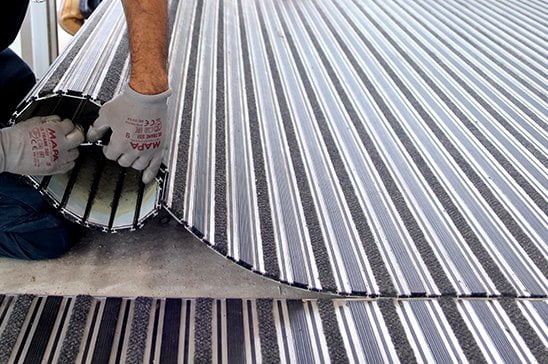With the rainy, murky days upon us, the need for effective entrance matting becomes more apparent. Soiled carpets are very unattractive and expensive to replace, but smooth wet floors are a danger to all who set foot on them.
Selecting entrance matting, on the surface (no pun intended!) sounds a relatively easy task. In reality, with such a huge range of entrance matting available, it can be quite mesmerising.
Creating a checklist of requirements can be helpful to ensure that entrance mats perform the best.
For example, is the entrance matting for indoor or outdoor use, in which case maybe PVC or rubber matting is the solution? Is it to be installed in a recessed well or laid on the floor surface? If laid to surface, then a ramped edge will be required. Is the entrance area an unusual shape or size? Entrance matting that can be cut to shape, or in tile modules, such as Premier Track or Premier Plus could be the answer.
Is primary and secondary matting required? If yes, then look for matting that scrapes and wipes moisture. Does it need to be lifted for cleaning? Lightweight, easy to manoeuvre entrance matting is required or opt for one that doesn’t allow dirt to fall through, such as PathMaster commercial entrance matting. How much wear and tear will it receive, ie will commercial entrance matting be required? Look out for wear tests and check characteristics of materials.
Commercial entrance matting is specifically designed to provide heavy duty wear and tear in areas with high levels of pedestrian footfall, such as shopping centres, airports and public buildings.
One certainty is that the larger the area of entrance matting, the more effective it will be in protecting floor surfaces.

At COBA Europe, our experienced sales team is on hand to answer any of your queries. Simply call 0116 240 1055.







